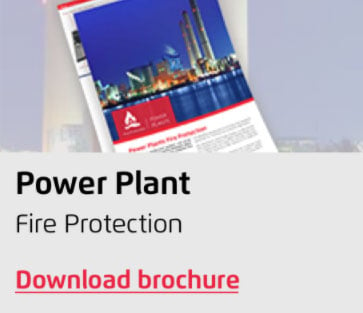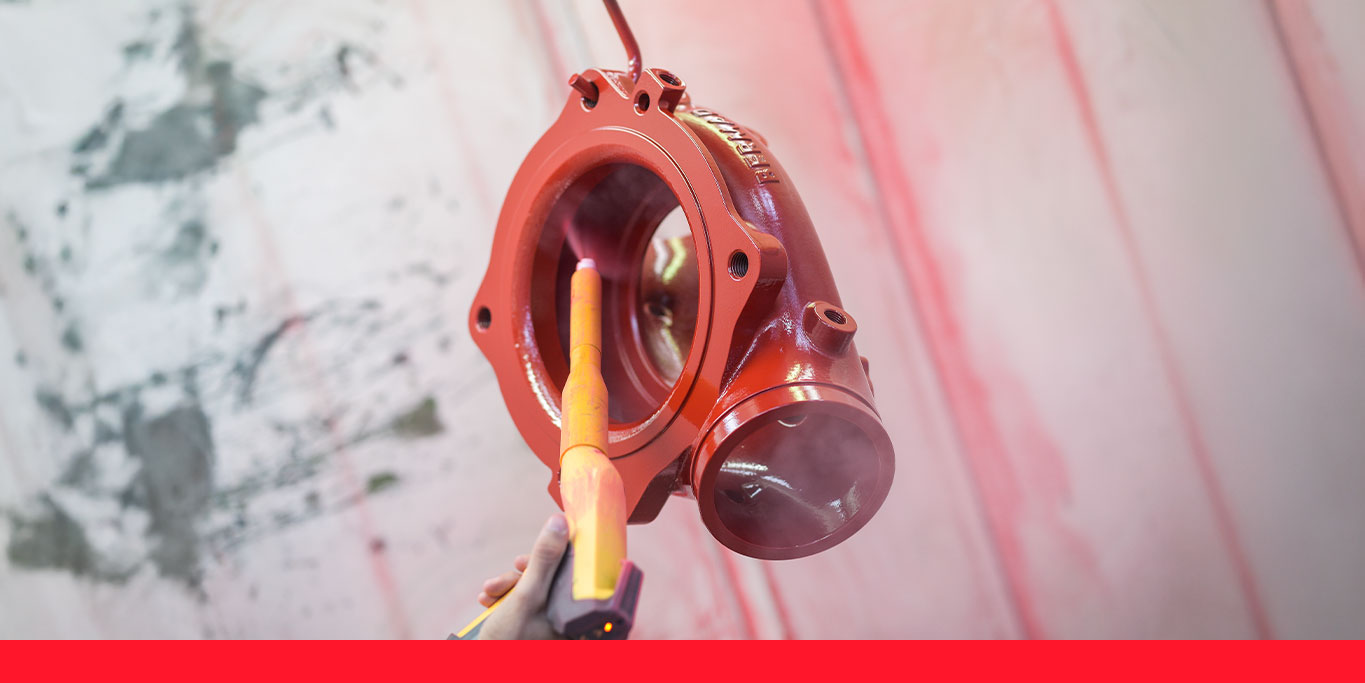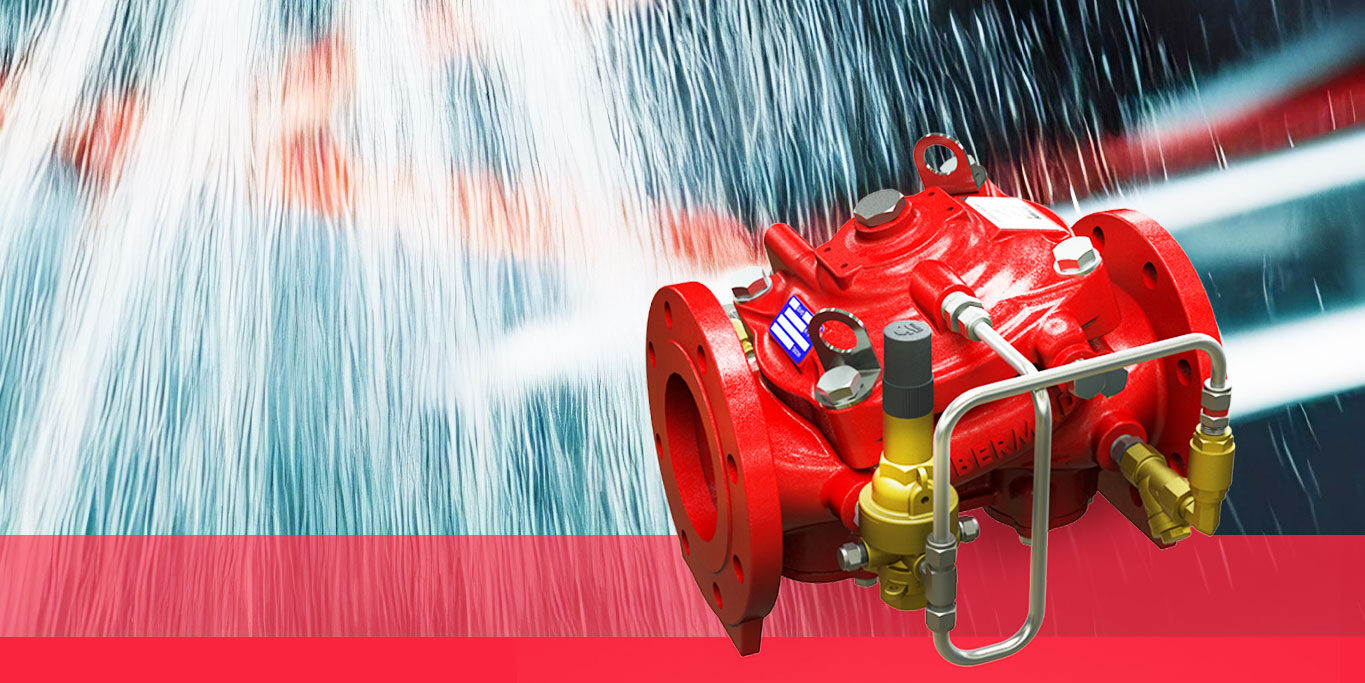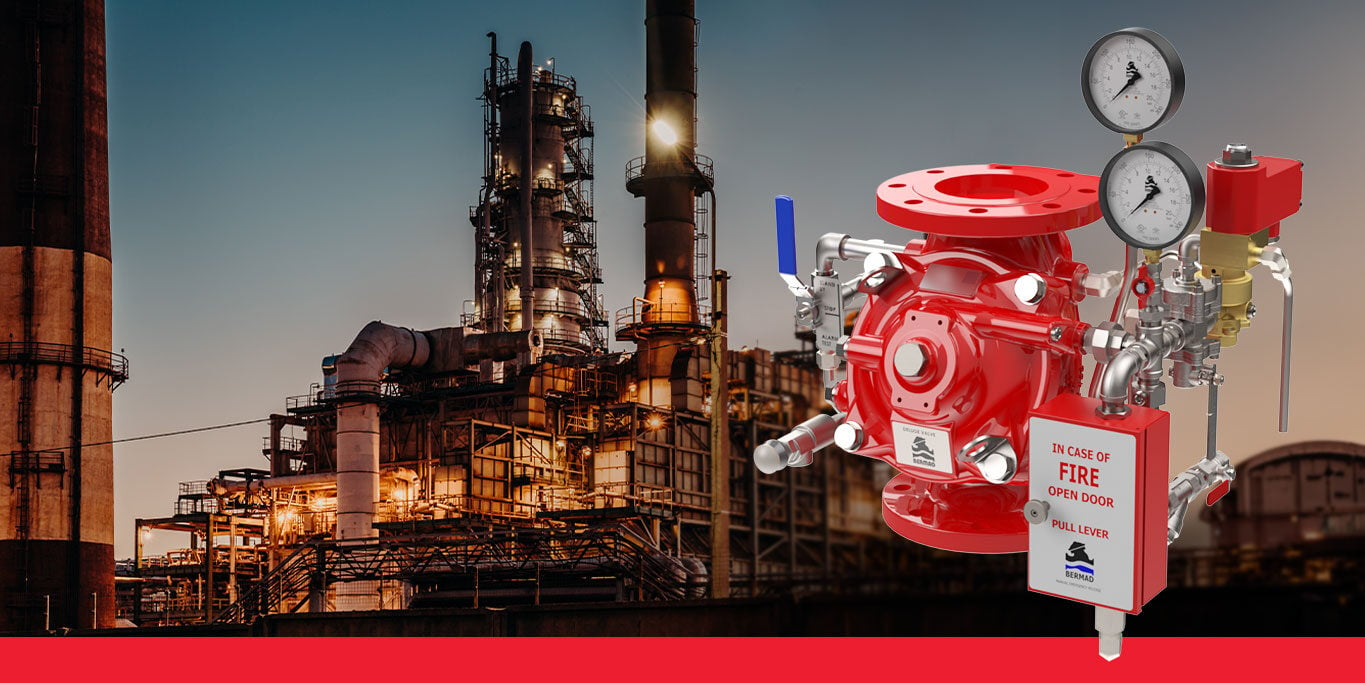Deluge valves are a critical part of many industrial fire protection systems, and often referred to as ''the heart of the system'', as they take a major role in protecting life and property.
Your choice of deluge valve can significantly affect many aspects of your fire protection system, including response speed, reliability, durability, maintenance costs and performance during a fire event. While product cost is always a factor, it pays to consider how the various models stack up against each other when selecting a deluge valve for your system.
Here are a few specific questions to ask next time you are looking for a deluge valve:
#1 Does the Valve Contain Wetted Mechanical Moving Parts?
Many deluge valves types - including clapper type valves - contain stem, shafts, pistons and other mechanical moving parts. Wetted moving parts create multiple problems in a valve. First, they are prone to sticking, which can be catastrophic in a fire situation. Corrosion or debris can cause a valve containing mechanical moving parts to stick and fail. Also, because they are more likely to stick, these valves demand more intensive and frequent maintenance in order to operate reliably. In contrast, a valve with no mechanical moving parts promises greater reliability, and requires far less maintenance. This can save significant amounts of money over the life of the system.
#2 What type of sealing does the valve have?

The main types of sealing devices for a diaphragm valve are usually either an unsupported diaphragm type or a disc type. The unsupported diaphragm type is highly stressed on the downstream side when the valve is held closed, restricting the ability of the valve to hold higher pressures for long periods. This often results in the diaphragm being stretched to drift toward the downstream, eventually causing leakage.
A disc type seal is a sturdier design including a fully supported diaphragm and a metallic disc encapsulated within the diaphragm that seals on a stationary seat within the valve body. This type is suited for reliable and long term sealing at higher pressures.
#3 Is the interior of the valve free of obstructions?
Deluge valves often contain stabilizing structures on the interior of the valve, such as ribs or guides. These features aim to provide support and prevent rupture of an unreinforced rubber sealing component. However, it is important to remember that water used in fire protection very often contains a lot of particulates and sediment. This material can easily get caught on these supporting structures, and either cause the valve to stick or reduce the water flow by clogging. In addition, the presence of ribs interferes with the flow and contributes to headloss. To prevent these issues, look for a deluge valve that does not contain internal ribs or other structures.
#4 Does the unit come with high quality paint?
A valve’s paint is not just a matter of aesthetics. Even the best metal casting often contain bubbles of gas, that form during the casting process. The quality of the coating process can make the difference between the valve lasting 1 year or 20 years. Look for a top-quality paint coat.
If you are designing a fire protection system for a harsh environment, such as one that will directly expose the valve to seawater or corrosive elements, you will also want to look for the availability of appropriate coatings (such as Epoxy for a corrosive environment, or polyester coating for UV protection).
#5 Can the valve be serviced and repaired in-line?
Many valves must be removed from the line for service. Choosing one that can be repaired in-line can save a bundle in maintenance costs over time. It’s also a good idea to look for one that is quick and easy to open for inspection or repair.
#6 What is the Kv (flow coefficient) of the valve?
When choosing a deluge valve, check the specs to be sure the valve has a high Kv (flow coefficient) for high flow capacity, suitable for the size and application. In the event of a fire, multiple valves in the system need to be opened, which can decrease the pressure enough to interfere with proper valve performance. Selecting a valve that can deliver the lowest possible head loss will help ensure best performance of the system.
#7 Does it have an indicator?
Deluge valve often looks like a “black box”: Looking at a typical deluge valve, one cannot know for sure what is the valve position – either it is open, close or somewhere in between - it cannot be observed from outside.
This is significant, as it takes few seconds for a valve to close. Choosing a valve that contains an indicator will allow you to know immediately exactly what position the valve is in.
#8 How fast does it open and close?
Ideally, a deluge valve should open very quickly in order to get the water to the fire in as short a time as possible. However, it should not cause water hammer, which can damage lines and expensive system components. While closing, deluge valve needs to close slowly and smoothly.
Look for a deluge valve that opens rapidly but closes slowly and smoothly for water hammer prevention.
#9 Does the valve have stainless steel tubing and fittings?
Stainless steel is the high standard in the industry because of its strength, durability, and resistance to corrosion.
The BERMAD 400Y Torrent Valve: Specifically Designed for Fire Protection
Unlike many valves on the market, the Torrent valve was designed from ground up specifically for Fire Protection. Designed to present a total solution to the unique challenges of a modern fire protection system and the market's needs. Its unique design gives it the highest flow capacity of any deluge valve on the market, as well as superior durability, reliability and performance.












